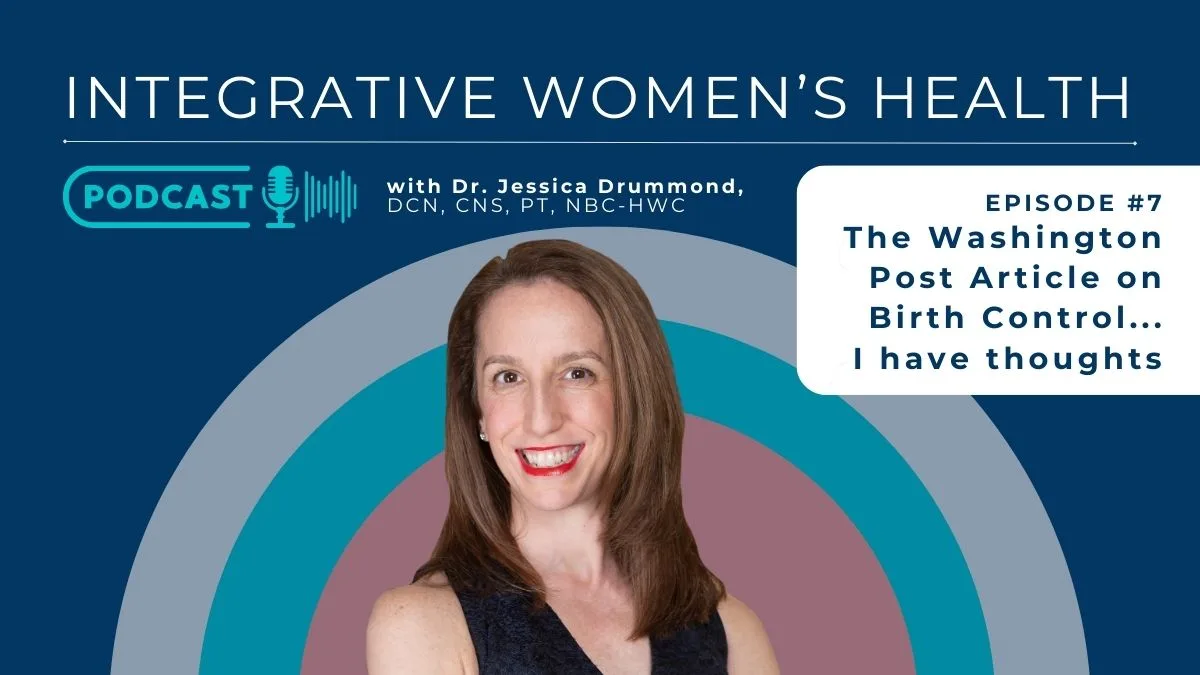She’s been dealing with increasing pelvic pain symptoms for years. Newly married and ready to start a family, she worries about the effect that her pelvic pain will have on her relationship with her husband and whether she will even be able to get pregnant. She’s been coming to see you in your physical therapy practice for the last couple of months in hopes of finally resolving the pain that she feels in her uterus. There was initial hope when you found the tight pelvic floor muscles and she finally had an explanation for her pain. The myofascial release and pelvic floor down training techniques you taught her gave her some temporary relief. The pain, however, keeps coming back and she is starting to give up hope.

Does this story sound familiar?
Maybe your patient is experiencing only temporary relief or there is lingering pain that just does not seem to go away no matter what you or your patient try. Either way, you feel like there is a piece of the puzzle that is still missing.
So where do you go from here?
As pelvic floor physical therapists, we know that there are many components to pelvic pain. We know that chronic pelvic pain is a multi-system disorder and we have seen within our own practice that pain symptoms can manifest in many different ways for each of our patients. There are also many root causes to pelvic pain ranging anywhere from trauma, muscle strain, emotional stress, and nutritional deficiencies. We have seen that pain in the pelvis is truly unique to each individual woman in the root cause and manifestation of it. Therefore, a thorough multi-system exam must be done to explore each woman’s unique healing recipe.
As physical therapists, we are in a unique position to help our patients explore these different aspects. In most clinics, we are able to see our patients for at least 45 minutes at a time in a one-on-one model for pelvic floor therapy. This time gives us the opportunity to connect with, and educate our patients, in a way that most healthcare professionals are not able to. Evidence also suggests that women with pelvic pain are open to explore different avenues and are seeking alternative care to find answers in their journeys to heal (1). This is where functional nutrition and physical therapy powerfully come together to heal our patients.
Nutrition fills in the gaps left by physical therapy alone.
The innervation of the visceral organs and the pelvic floor musculoskeletal anatomy share a pathway back to the spinal cord, resulting in a functionally necessary neural cross-talk between the systems (2, 3). This cross-talk allows for the pelvic floor area to perform its sexual, bladder, and bowel functions. However, this also results in negative cross-talk when one system is not working in the way that it should and an overlap of symptoms occurs (3).
This cross-talk plays a part in pelvic pain when the food your patient is eating results in inflammation within the visceral organs.
Food intolerances to common foods such as gluten or dairy can increase the risk for “leaky gut” syndrome. “Leaky gut” syndrome is when the intestinal permeability of the gut wall is increased due to an autoimmune response. When the tight junctions between each cell are weakened, large particles of food and bacteria that are not meant to cross the gut wall, enter into the blood stream creating an inflammatory response. This inflammatory response then spreads throughout the body, aggravating organs and muscle tissue alike. Additionally, digestive dysfunction can occur. Our pelvic pain patients are commonly also diagnosed with Small Intestine Bacterial Overgrowth (SIBO), Irritable Bowel Syndrome (IBS), Constipation, or Celiac Disease. These digestive issues can exacerbate musculoskeletal pelvic floor dysfunction. can also have an impact on the musculoskeletal system. When digestive dysfunction results in bowel irregularities such as constipation or loose stools, injury to the pelvic floor muscles can occur because of chronic clenching or straining during defecation (4).
An elimination diet is a low risk first step to decreasing symptoms. An elimination diet involves taking out common inflammatory foods for a short period of time, then, one-by-one, bringing foods back in to identify which foods are triggers of symptoms. This approach allows for the most expansive diet while eliminating any foods that are contributing to your patient’s pain. The elimination diet process can also be beneficial in bringing a patient’s awareness to the symptoms within her body, allowing the patient to notice patterns and triggers of her pelvic pain. It is also an opportunity for education on lifestyle and behavior modifications that will support her healing journey.
Skilled functional nutrition and lifestyle recommendations can accelerate pelvic pain relief.
Optimizing nutrition and healthy lifestyle strategies are essential to accelerate healing. Evidence suggests that B vitamin deficiencies (such as folate deficiencies) in addition to deficiencies in Vitamin C, Vitamin D, iron, magnesium, and zinc factor into increased myofascial trigger points within the pelvic floor muscles (1). Additionally, evidence suggests that supplementing with antioxidants, such as omega-3 fatty acids, can help to reduce inflammation within the body (5). Understanding how nutritional deficiencies can affect pelvic pain is an important part of helping your patient to heal from pelvic pain and get her quality of life back!
Inflammation and your patient’s tight pelvic floor muscles.
Addressing systemic causes of inflammation within the body is necessary to eliminate the inflammation process that often contributes to pain in the pelvis or uterus; concurrently, physical therapy is often then needed to address the musculoskeletal aspects of the pain that were triggered by the inflammation process (2). Once the root cause of inflammation has been targeted, the musculoskeletal pain cycle that often occurs with pelvic pain must be addressed as this cycle often continues even after the original inflammation has been resolved (2). In pelvic pain that began as a response to inflammation, central sensitization can often be a factor in the stubborn nature of pelvic pain. Central sensitization is the increased sensitivity of the nervous system to pain triggers, meaning the patient’s pain signals are turned up too loud. When the brain’s output signals alarm bells for pain, this can result in increased tension of the muscles as a survival response. Therefore, in order to address the musculoskeletal aspects of pelvic pain, we must implement techniques to halt this pain cycle once the original inflammation process has been resolved. Teaching our patients diaphragmatic breath, pelvic floor down-training, encouraging a walking program (preferably in nature) all help to calm down the nervous system and give it the restart that it needs. Patient education targeting stress relief, guided imagery, meditation, postural education, and proper toileting techniques may also be required.

Physical therapy is the key for addressing the musculoskeletal pain.
Evidence is finding that 85% of those diagnosed with chronic pelvic pain also present with musculoskeletal dysfunction (3). A thorough physical therapy exam should accordingly assess for any structural dysfunctions, hypertonic muscles, and decreased strength. Myofascial release, behavioral modifications, and exercise at this time can then aid the patient in returning to a strong yet relaxed pelvic floor. It is important to assess the pelvic floor muscles in tone, coordination, proper recruitment, and the ability to relax rather than just jumping into a strengthening program in the form of Kegels, which can actually worsen symptoms if not correctly done (6).
As a physical therapist who works with women in pain, you are great at addressing the musculoskeletal piece of the puzzle, but, addressing her nutrition deficiencies, digestive issues, and immune health issues may still feel complex. Fortunately, learning some simple strategies will allow you to make skilled and effective lifestyle recommendations for your patients who plateau with physical therapy alone, and continue to struggle with constipation, SIBO, gut dysbiosis, IBS, food sensitivities, or autoimmune factors. And, once you understand these simple and effective nutrition tools (and when to refer – and how to find – to skilled functional nutrition professionals if the issues are more complex than you have time to deal with alone), you will be getting even better results for your patients.
Physical therapy and functional nutrition are a powerful combination for addressing pelvic pain complicated by constipation, food sensitivities, gut microbiome imbalances, or other digestive and immune challenges.
Fortunately, skilled pelvic health physical therapists often have the time to really address our patient’s issues from the root cause. When your patients plateau, you are no longer stuck with the limited options of referring her back for more pain medication or to explore her surgical options. You will now be well versed in functional nutrition strategies to skillfully, collaboratively and holistically fill in the gaps in your patient’s care.
When you understand how nutrition education and physical therapy can support each other in healing pelvic pain, you can transform the lives of patients struggling with even the most complex clinical challenges.
References:
1. Pastore E, & Katzman W. (2012) Recognizing Myofascial Pelvic Pain in the Female Patient with Chronic Pelvic Pain. Journal of Obstetric, Gynecologic and Neonatal Nursing. 41(5), 680-691.
2. George S, Clinton S, & Borello-France D. (2013) Physical Therapy Management of Female Chronic Pelvic Pain: Anatomic Considerations. Clinical Anatomy. 26(1), 77-88.
3. Montenegro M, Vasconcelos E, Candido dos Reis F, Nogueira A, & Poli-Neto O. Physical Therapy in the Management of Women with Chronic Pelvic Pain. International Journal of Clinical Practice. 62(2), 263-269.
4. Berzuk K. (2014) The Pelvic Floor Muscle: the Link Between Baldder, Bowel, and…Sex? A Review of Current Pelvic Therapy Approaches for Diagnosis and Treatment of Sexual Disorders. Current Sexual Health Reports. 6(3). 192-200.
5. Abercrombie P, & Learman L. (2012) Providing Holistic Care for Women with Chronic Pelvic Pain. Journal of Obstetric, Gynecologic and Neonatal Nursing. 41(5). 668-679.
6. Rosenbaum T, & Owens A. (2008) Continuing Medical Education: The Role of Pelvic Floor Physical Therapy in the Treatment of Pelvic and Genital Pain-related Sexual Dysfunction. J Sex Med. 5(3), 513-523.







